Victory: Henry II of Labrit King of Navarre, Henry I Lord of Béarn
Type: The Liard of Navarre – Type 3a according to A. Clairand
Year: Without year, between 1541 and 1555
Mint: Mint of Pau or Morlaas, Amount unknown
Border: Irregular
Edge Engraving: —–
Metal: Billon (Silver and Copper alloy)
Diameter: 16-17 mm
Weight: 0.90 g. Approx.
Coinage: By hammer
Mintmaster: Unknown
Recorder: Unknown
Front:
Front Words: +: HENRI.DEI.G.REX.NAVAR.DB
Obverse Description: A crowned H, corresponding to the first letter of Henry's name. A besante can be seen above the central cross of the H. A ring below the R of the word HENRI.
Frontispiece: Henry, by the grace of God, King of Navarre, Lord of Bearn (DB – Domine Bearni)
Back:
Backwords: +:GRA.DEI.SVM.ID:QVOD.SVM.
Reverse Description: Flat, short cross
Background Text: By the grace of God, I am what I am. Traditional image text on Navarrese coins begun by Henry II.
The Liard coin type appeared during the 15th century. It was a coin that originated in the ancient Dauphiné (Dauphiné, in the area of present-day Grenoble). The Dauphiné was annexed to the French monarchy in 1339, but for at least another century it maintained a certain autonomy and coinage. In fact, the heir to the French throne would have been known as the “dolphin” or “dolphin”, a name that came from having received the government of the Dauphiné. The purpose of the decision was to prepare the heir for the tasks of government.
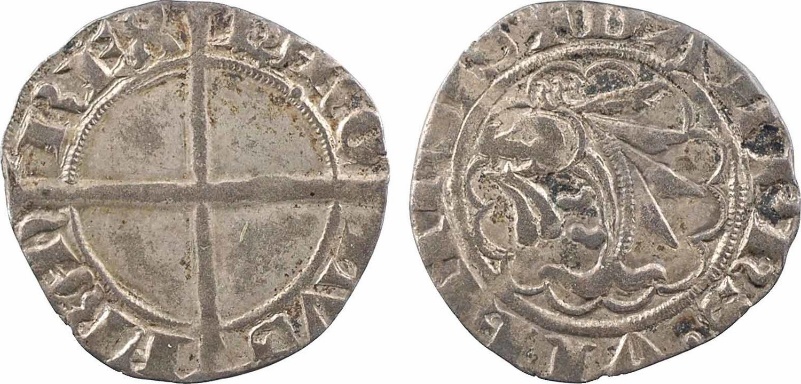
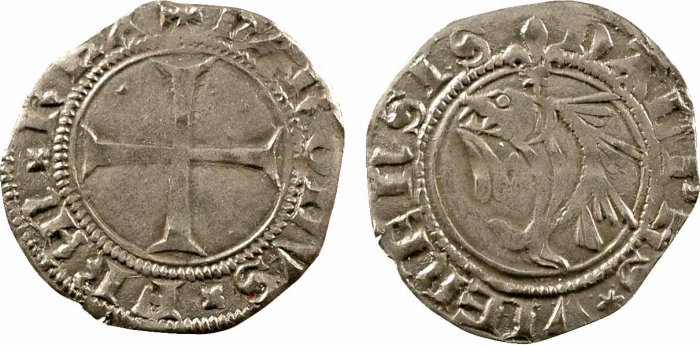
Liard of the Dauphin Charles II, later Charles VI of France (1380-1422) – Billon 19.7 mm 1.27 gr.
Of Charles III, Dauphin, later Charles VII of France (1429-1461) – Billon 20.0 mm, 1.38 gr.
The nominal value of the liard was three Tournais francs, that is, 80 liards made up a pound (libra). These coins were known as liard or ardit, and in the archives of Béarn we find both names with the same meaning. Apparently, the name of the liard originally comes from "li-ardit". "Hardi" comes from the English farthing or quarterpenny. From English, after passing to France and then to the Gascony area, it gradually became "farthing", "fardin" and later "hardi".
From the second half of the 15th century, during the reign of Louis XI of France, Liard coinage spread to other territories of the French kingdom. His son Charles VIII also continued the new tradition, for example, coins made at the Bayonne mint can still be found.
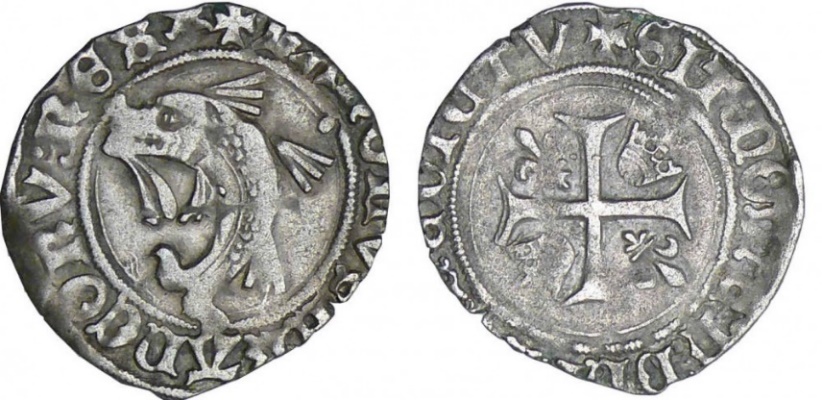
Liard of Charles VIII of France (1483-1498) – Billon 19 mm, 0.85 gr
Already in the 16th century, Louis XII created the liard of Provence. In this liard, the image of a dolphin was replaced by the image of a crowned L. Originally, the liards had long, wide-legged crosses, but gradually the crosses became shorter and flatter.

Louis XII of France (1498-1515) Liard of Provence. Aix-en-Provence, 1st decade of the 16th century – Billon 15 mm, 0.86 gr
Francis I, after the currency reform of 1541, created a model that resembles the Liard of Henry II, which appears in the presentation.
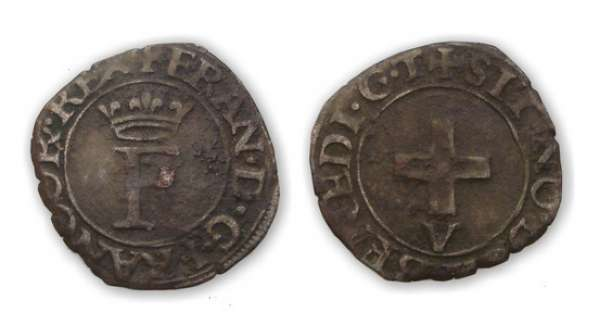
Liard of Francis I of France (1515-1547) – Turin Mint, circa 1541, Billon, 17mm 0.84gr
As for Henry's liard, no date appeared on the coins of Navarre until the last year of Henry's life, that is, until 1555. Therefore, we do not know exactly in which year this liard was minted, but we can state that it dates from between 1541 and 1555. In fact, Henry copied the model of the French Liard of the short cross established by Francis I after 1541.
It is also almost certain that Henry had previously minted other series of Liards during his reign. The great Ibáñez Artica, in his 2001 book on the exhibition of Navarre coins, considered that the short cross and the wide cross liards were from the same period, and therefore explained that the two different specimens were minted after 1541, with different backgrounds but at the same time. Many French writers, however, consider the wide cross liards to be from before 1541. I would also favor the second option, and would compare the wide cross liards with the wide cross Douzains; they predate the short cross douzains that appeared after 1541.
An example would be this other piece from the collection. This wide-legged cross liard has a more rounded and elaborate crown shape, and does not have a ring under Henri's R.
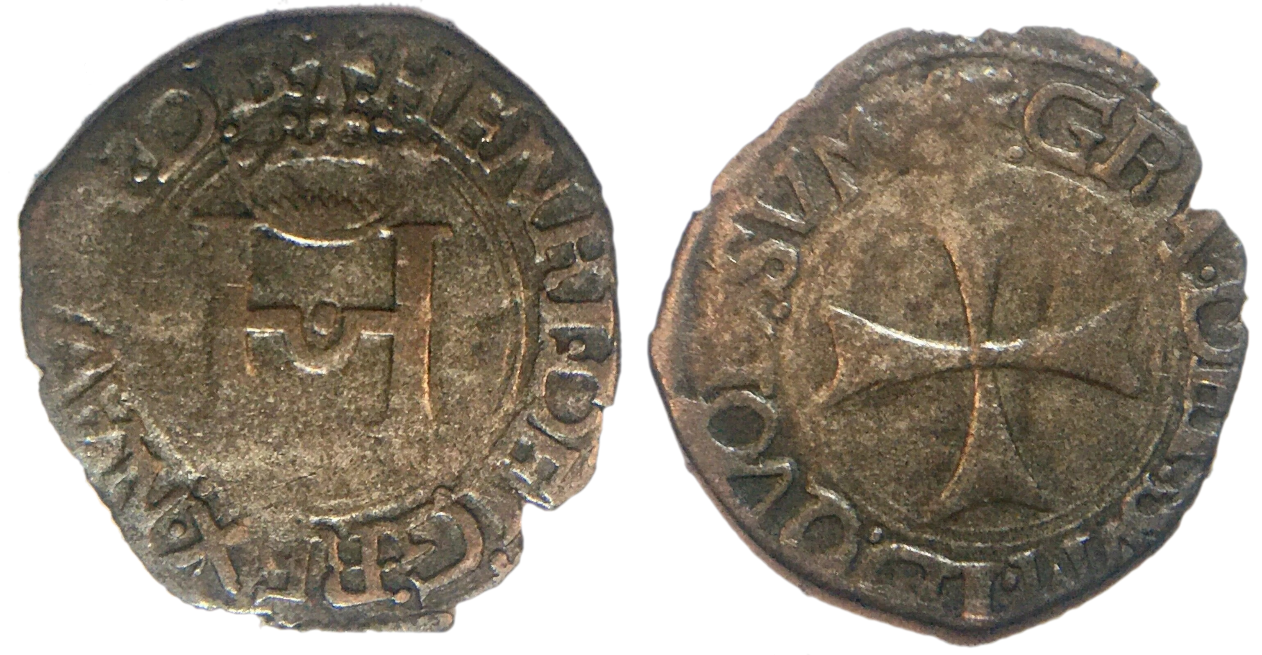
Victory: Henry II of Labrit King of Navarre, Henry I Lord of Béarn
Type: The Liard of Navarre – Type 1a according to A. Clairand
Year: No year, probably one of the first in the Liard succession, before 1541
Mint: Mint of Pau or Morlaas, Amount unknown
Border: Irregular
Edge Engraving: —–
Metal: Billon (Silver and Copper alloy)
Diameter : 17-18 mm
Weight : 0.79 gr. Approx.
Coinage: By hammer
Mintmaster: Unknown
Recorder: Unknown
Front:
Front Words: +: HENRI.DEI.G.REX.NAVAR.DB
Obverse Description: A crowned H, corresponding to the first letter of Henry's name. A chevron can be seen above the central cross of the H. The circular crown, which rests on the letter H, reveals an irregular formation within it, similar to a mountain range (the Pyrenees perhaps?). There is no ring under the R in the word HENRI.
Frontispiece: Henry, by the grace of God, King of Navarre, Lord of Bearn (DB – Domine Bearn)
Back:
Backwords: +:GRA.DEI.SVM.ID:QVOD.SVM.
Reverse Description: Wide-legged cross
Background Text: By the grace of God, I am what I am. Traditional image text on Navarrese coins begun by Henry II.
This Liard of group 1a may be of the same period as the other Liard cross shown below. This also has a round crown, but does not appear to have any irregular formations on its inside and shows a ring below Henri's R. Like the previous one, the dating of this other type of Liard, which we will designate as group 2b, is unknown, but in any case it seems to be before 1541.
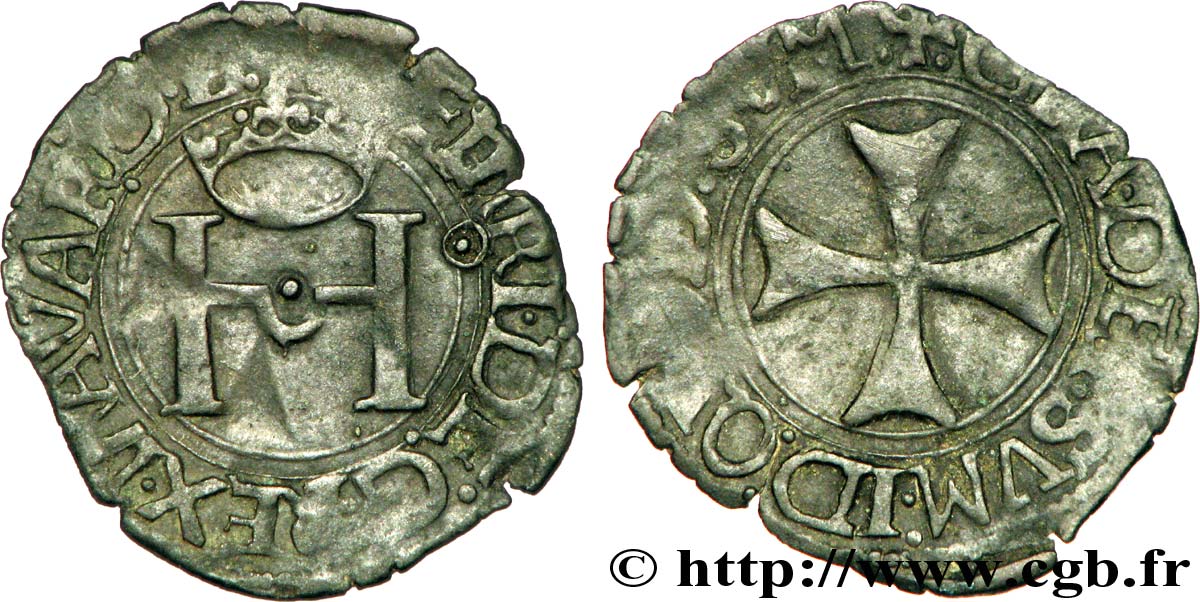
Henry II's Liard of the Cross, ring under the R – Type 2b – cgb house sale archive
As we have seen, we have found at least three types of Henry II liards, and we can almost certainly say that they are not from the same period. Unfortunately, no documents or mint records from the period have come down to us, and we do not have much information about the coinage of Henry II. The meaning of the ring under the letter R is unknown, and therefore we do not know whether it could be a sign or symbol of a mint or a mintmaster.
Blanchet states that from 1524 onwards, Henry reactivated the mint at the castle of Pau. It did not yet have the advanced water-powered coining machines that had been available since the mid-16th century, but it is quite possible that he was already minting douzaines and liards by hammer. If we start guessing, we can venture to say that the ring could have been a way of differentiating the mints of Morlaas and Pau, but unfortunately, as I said, we would only be guessing.
The Liard classification presented so far would also be accepted by Arnaud Clairand, according to his essay written in BSFN:
Clairand, A., 1992, "Essai de classification typologique et chronologique des liards à l'H de Navarre au nom d'Henri Ier d'Albret, 1516-1555", Bulletin de la société française de numismatique, p. 271-273 Mar 1992
However, Arnaud Clairand's work goes even deeper, and describes two other types of liards that date from the period after 1541, and therefore to the back of the short cross.
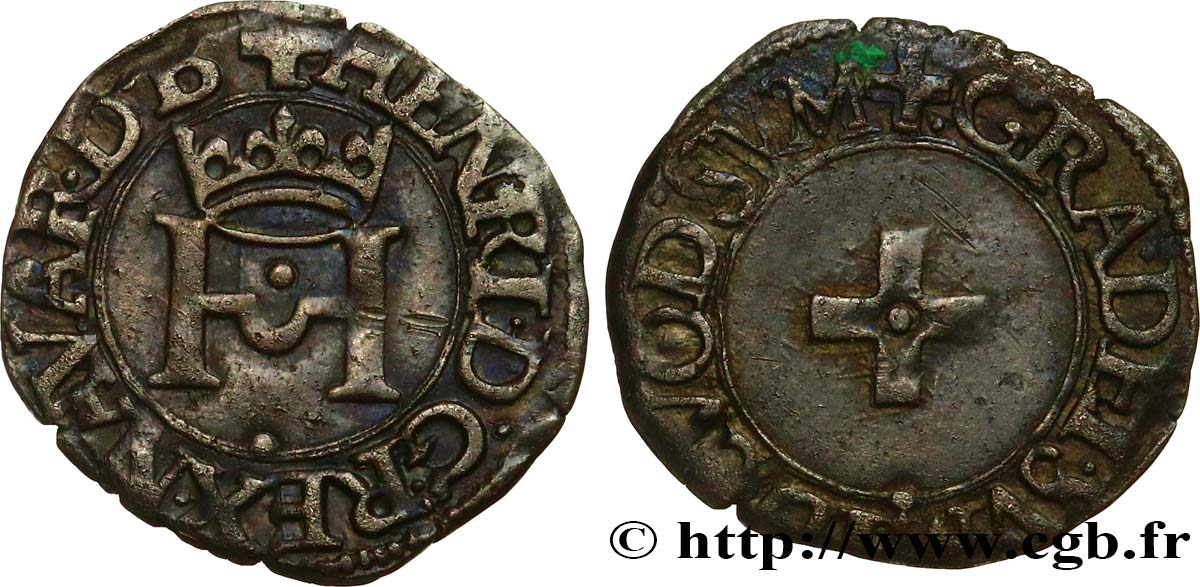
Short Cross Liard of Henry II, without ring under R – Type 4c – cgb house sale archive
The type 4 liard does not have the inscription DEI.G, and instead DG can be seen on the obverse of the coin. It does not have a ring under Henri's R, and a dot can be seen under letters 9 and 10 on the obverse (variant 4c also shows this dot on the reverse, under letter 11).
Type 5 is similar to type 4, but is distinguished by the presence of a ring under the letter Henri's R. There is no type 5c variant.
As we have seen, and in the absence of contemporary documents, we do not know the meaning of the ring under the letter R; we are in the same situation with the dot that appears under the letters 9 and 10. In the history of French coinage, and until the reform of 1540, the location of these dots indicated the mint mark. For example, if the dot was under the letter 18, it indicated that the coin was made at the Paris mint, the 9th was La Rochelle, the 10th was Limoges, etc., etc. After the reform of 1540, mints were designated by special letters instead of dots, for example Paris had the letter A, Bordeaux the letter K and Bayonne the letter L. On French coins, the dots under the letters gradually disappeared and disappeared in the 1550s. The dot that appears on Navarre coins probably did not have any mint meaning, perhaps it was just a symbol of the mintmaster or engraver. But as we will see, these liards have many mysteries between the different varieties and in these times (as well as before and after), each detail that the coins contained had its own importance, message and meaning and was not the result of chance. Although we are talking about the Liard here, if we examine Henrikeren Douzainak, we will notice the similarities.
In his essay, Clairand also describes the evolution of the typography of the letter S among the different types of liard. As we will see, the meaning of the crossed S shown in types 4 and 5 will provide content for another section.
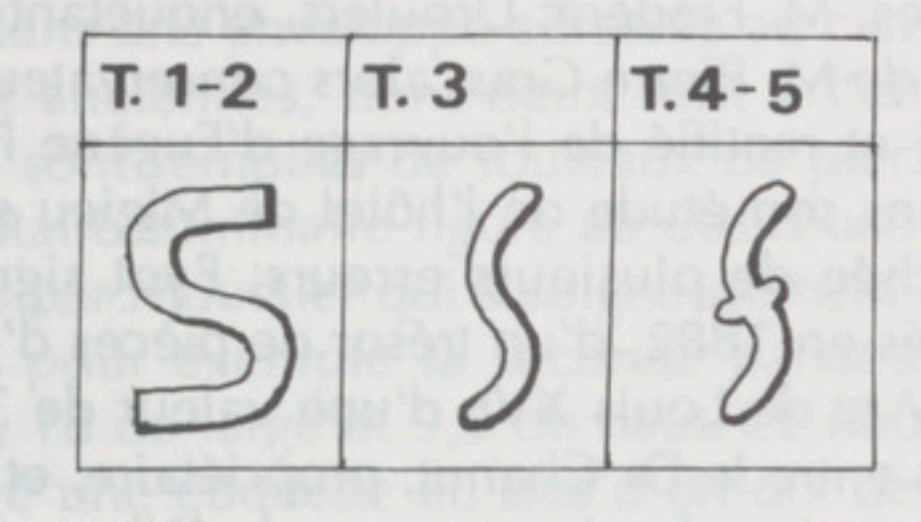
Among the different types of typography for the letter S – A. Clairand
Starting from these five basic Liard types, in all the types mentioned, we can always find a variant with an inverted letter N. We have given these variants the suffix b. As with the ring and the dots, the meaning of having the inverted letter N is still unknown today. But it is difficult to believe that it was a repeated error of the engraver. Henry's successors, with the exception of the crossed S, did not use any of these elements on their coins.

Two type 3 liards with short cross after 1541, inverted N on the left (3b), normal N on the right (3a)
As a summary of Clairand's classification, we can show the following table. Clairand did not find any specimens of type 2a in his experiment, and I have not found any either, but it is very likely that this variety is known.
|
Variant Type |
|||
|
Liard Mota |
Normal N |
Inverted N |
Normal N, back Dot under letter 11 |
|
Wide-legged Cross, Without Rings |
1a |
1b |
|
|
Wide-legged Cross, Ring Below the Letter R |
* |
2b |
|
|
Short Cross, DEI. G., Ring Below the Letter R |
3a |
3b |
|
|
Short Cross, DG, Dot below letters 9-10, Without Ring |
4a |
4b |
4c |
|
Short Cross, DG, Dot under letters 9-10, Ring under letter R |
5a |
5b |
|
Henry II's Liard classification
As we can see, Henrike's Liards present many types and variations. For my part, I am sure that I have seen liards with a short cross, DEI, which would be a mirror of Type 3, but without the ring (this should be called Type 6). The spelling of the letter S also has many variations. Clairand, in this case, through his essay, shows us the most prominent characteristics that must be honed in these Liards, and this is the most important lesson we must learn.
We generally have no written record of the exact weight and law of these liards. In the time of his successor Joan, the Liard is said to have had an average weight of 0.941 grams and the silver law was about 2 drachmas (167 thousandths). In the time of Henry, these liards must (in theory at least) have had the same weight and law as those made in France, since they had full parity of value with French coins. The law of the Liard of Francis I was 179 thousandths.
According to the writings, these Liards of Henry were made in very large quantities and, taking advantage of their parity of value in the kingdom of France, they spread and prevailed throughout all the territories of Francis I. In 1556, Francis's successor, Henry II of France (Margaret's nephew), under pressure from the coinage court in Paris, reduced the value of the foreign Liard or Ardit and, accordingly, the Navarrese Liard would be worth two dinars until 1572.
What could you buy with a Liard in those days? I haven't found many detailed studies of prices and wages, but this graph shows the price of butter in the Kingdom of France during the 16th century.
According to this, at the beginning of Henry's reign, around 122 grams of butter could be purchased for one liard; by the end of the reign, the amount of butter purchased had been reduced to around 61 grams.
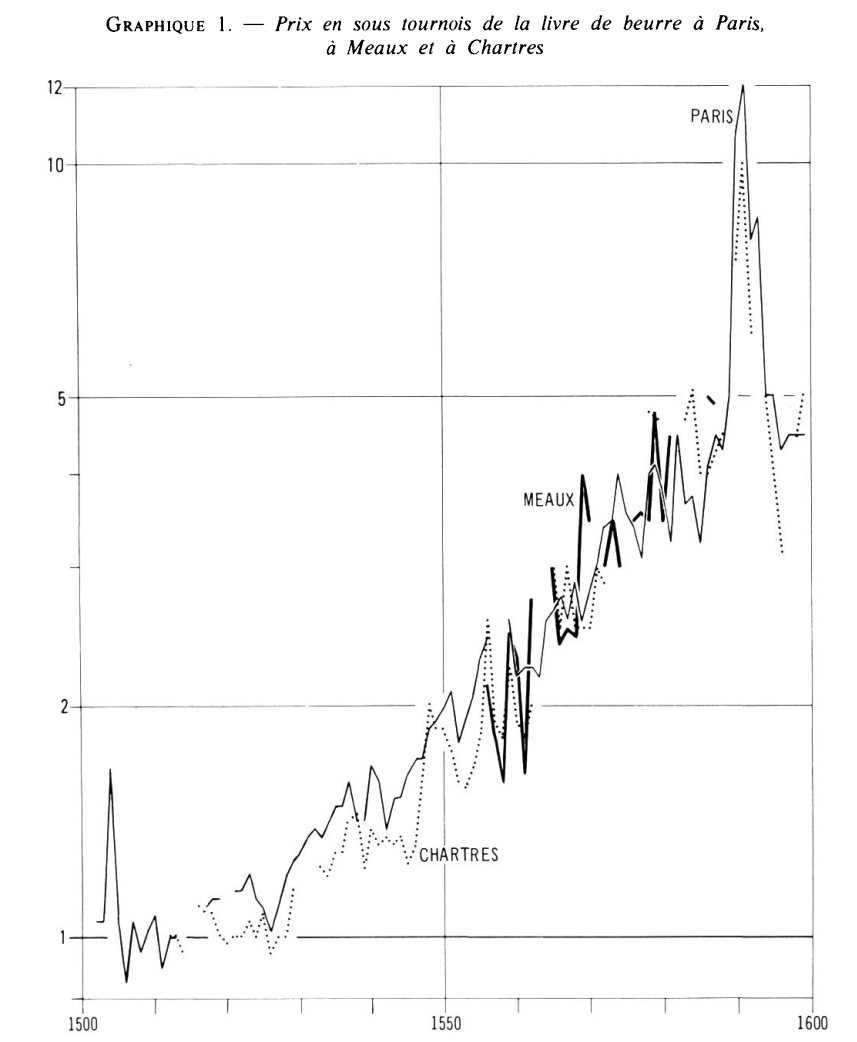
The price of butter during the 16th century – in three different French cities
Finally, as an interesting note, we will show you this Liard with dolphins, named after Henrike. Today, there is a broad consensus that it is a counterfeit coin made at that time. It was probably the work of counterfeiters in northern Italy at that time. However, at an auction held in 2014, this Liard reached a price of €1,600.

Contemporary forgery – Henrike de Labrit's Liard with a dolphin
Bibliography:
LIARD MONNAIE – Wikipedia link
THE COIN IN NAVARRA – NAVARRA MUSEUM – EXPOSITION FROM MAY 31 TO NOV 25 2001. Miguel Ibáñez Artica link
MINT OF NAVARRE AND BEARN – WIKIPEDIA – link
Histoire monétaire du Béarn – Jules Adrien Blanchet – 1893 – link
Essai de classement typologique et chronologique des liards à l'H de Navarre au nom d'Henri Ier d'Albret, 1516-1555″, Bulletin de la société française de numismatique, p. 271-273 March 1992 – A. Clairand
All personal data collected on this blog will only be used to disseminate the contents of this blog. Personal data will never be transferred or sold to third parties. You can unsubscribe at any time by clicking on the link in the footer of our emails.
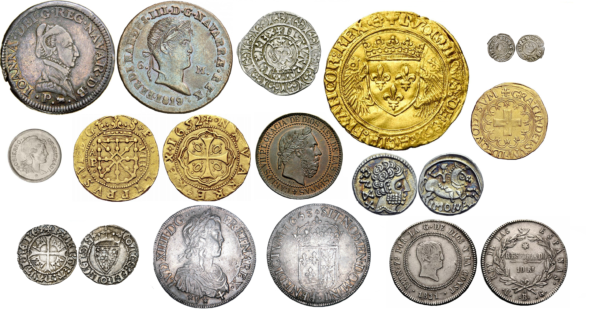
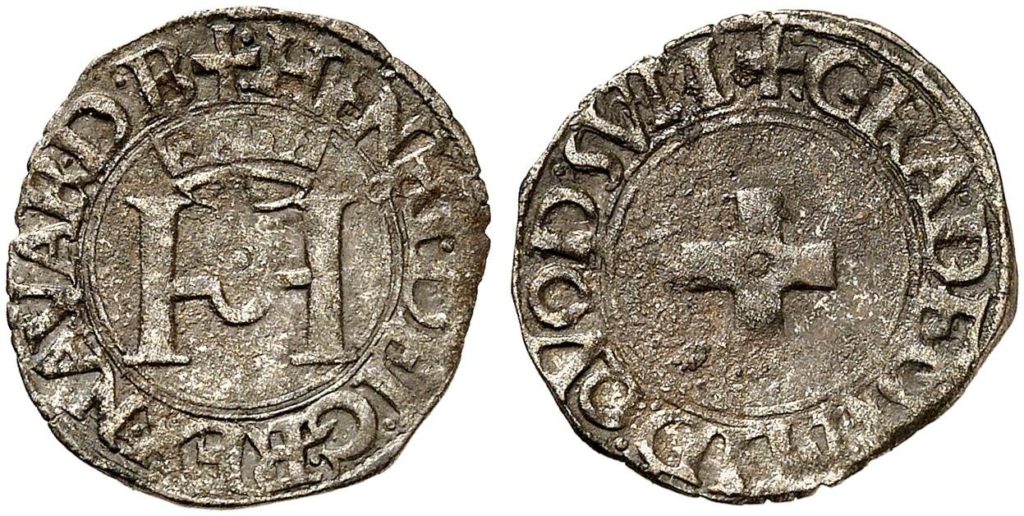
Pingback: The Douzains of Henry II | History of Basque Coinage